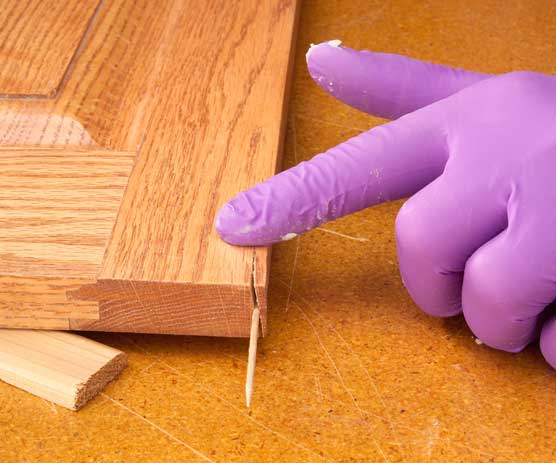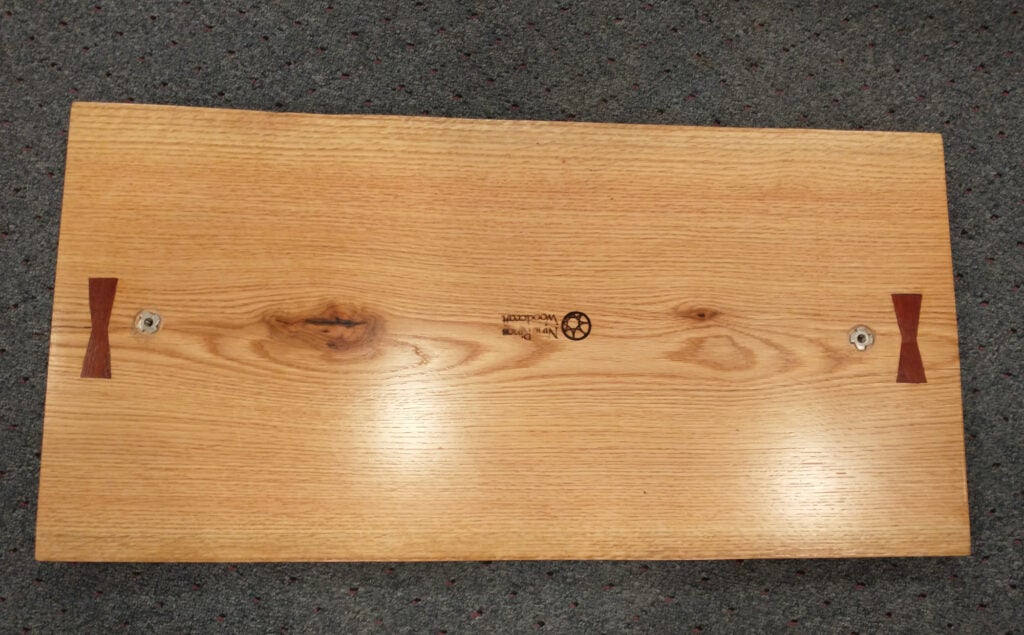Wood is a timeless and elegant material that adds warmth and character to any space. From furniture to flooring, wood has been a staple in our homes for centuries. However, over time, even the sturdiest of wood can develop cracks, causing concern and detracting from its natural beauty. If you’re facing the dilemma of cracking wood, fear not! In this guide, we will explore the various causes of wood cracking and provide you with expert tips and techniques to effectively fix and restore your beloved wooden pieces.
Understanding the root causes of wood cracking is essential in determining the best course of action for repair. Whether it’s due to changes in humidity, aging, or improper maintenance, cracks can occur for a multitude of reasons. But fret not, as we delve into this topic, we will equip you with the knowledge and skills needed to identify the underlying issues and implement the appropriate remedies. Get ready to roll up your sleeves and embark on a journey of reviving and preserving your cherished wooden treasures.
How to Fix Cracking Wood:
- Identify the crack’s severity and location.
- For small cracks, use wood filler or epoxy to fill the gap.
- If the crack is larger, use wood glue and clamps to realign the pieces.
- For outdoor wood, consider sealing or staining to prevent future cracking.
- Regularly maintain and moisturize the wood to minimize cracking.

Introduction
Wood is a popular material used in various applications, from furniture to flooring. However, over time, wood can develop cracks, compromising its integrity and aesthetic appeal. If you’re facing the issue of cracking wood, don’t worry! In this guide, we will provide step-by-step instructions on how to fix cracking wood and restore its strength and beauty.
Gather the necessary tools and materials
Before you begin the process of fixing cracking wood, it’s important to gather all the necessary tools and materials. This will ensure that you have everything you need at hand, saving you time and effort in the long run. Here’s a list of items you’ll need:
- Wood glue
- Wood filler
- Sandpaper (various grits)
- Putty knife
- Clamps
- Paint or stain (if desired)
- Paintbrush or sponge
Having these tools and materials ready will allow you to proceed smoothly through the repair process.
Assess the extent of the cracks
Before you can start fixing the cracking wood, it’s crucial to assess the extent of the cracks. This will help you determine the appropriate repair method and ensure that you address all the issues effectively. Begin by closely examining the cracks and identifying any loose or splintered wood. If there are any loose pieces, gently remove them using a putty knife.
Next, use sandpaper to smooth the edges of the cracks, creating a clean surface for the repair. Start with a coarse grit sandpaper and gradually move to finer grits to achieve a smooth finish. Be sure to remove any dust or debris from the cracks, as this can interfere with the adhesion of the repair materials.
Apply wood glue and clamp the cracks
Once the cracks are properly prepped, it’s time to apply wood glue. Squeeze a small amount of wood glue into each crack, ensuring that it fills the entire length. Use a putty knife or your finger to spread the glue evenly along the cracks. Make sure not to use excessive glue, as it can cause messy overflow.
After applying the wood glue, use clamps to hold the cracked wood together tightly. Place the clamps strategically along the cracks, ensuring even pressure distribution. Leave the clamps in place until the glue has fully dried, following the manufacturer’s instructions. This will typically take several hours, so be patient and avoid disturbing the clamped wood.
Fill and sand the repaired areas
Once the wood glue has dried and the cracks are securely held together, it’s time to fill any remaining gaps or imperfections. Use a wood filler that matches the color of the wood to ensure a seamless repair. Apply the filler to the cracks using a putty knife, smoothing it out to create a level surface.
After the filler has dried, use sandpaper to sand the repaired areas. Start with a coarse grit sandpaper and gradually move to finer grits, ensuring a smooth and even finish. Be careful not to oversand, as this can damage the surrounding wood. Once you’re satisfied with the smoothness, wipe away any dust with a clean cloth.
Apply paint or stain (optional)
If desired, you can apply paint or stain to the repaired wood to match its original color or enhance its appearance. Choose a paint or stain that is suitable for the type of wood you’re working with. Apply the paint or stain using a brush or sponge, following the manufacturer’s instructions for the best results.
Allow the paint or stain to dry completely before using or exposing the repaired wood to any moisture. This will ensure a durable and long-lasting repair.
Conclusion
By following these step-by-step instructions, you can effectively fix cracking wood and restore its strength and beauty. Remember to gather all the necessary tools and materials, assess the extent of the cracks, apply wood glue and clamp the cracks, fill and sand the repaired areas, and optionally apply paint or stain. With proper care and maintenance, your repaired wood will regain its integrity and serve you well for years to come.
Frequently Asked Questions
Here are some common questions about how to fix cracking wood:
Question 1: Why does wood crack?
Wood can crack due to several factors, including changes in humidity, temperature fluctuations, and improper seasoning or drying. When wood absorbs moisture from the air, it expands, and when it dries out, it contracts. These repeated cycles of expansion and contraction can lead to cracks in the wood.
In addition, if wood is not properly seasoned or dried before use, it may contain excess moisture, which can cause it to crack as it dries. Poor maintenance or exposure to harsh environmental conditions can also contribute to cracking.
Question 2: Can cracked wood be repaired?
Yes, cracked wood can be repaired in most cases. The extent of the damage and the type of crack will determine the appropriate repair method. Small cracks can often be fixed using wood fillers or epoxy resins. These products are designed to fill the cracks and restore the structural integrity of the wood.
For larger or more severe cracks, a more extensive repair may be necessary. This could involve using wood splines or dowels to reinforce the cracked area, or even replacing the damaged section of wood altogether. It is important to assess the extent of the damage and consult a professional if needed.
Question 3: How can I prevent wood from cracking?
To prevent wood from cracking, it is important to properly season or dry the wood before use. This involves allowing the wood to acclimate to the environment where it will be used, ensuring that it reaches the appropriate moisture content. Slow and controlled drying helps to minimize the risk of cracking.
In addition, maintaining a stable humidity level in the environment where the wood is located can help prevent cracking. Using a humidifier or dehumidifier as needed can help regulate the moisture content in the air and reduce the likelihood of wood cracking.
Question 4: Can I fix cracked wood without professional help?
Yes, small cracks in wood can often be fixed without professional help. There are various wood fillers and epoxy resins available in the market that are designed specifically for repairing cracks in wood. These products are typically easy to use and come with instructions on how to apply them.
However, for larger or more complex cracks, it is advisable to seek professional help. A professional woodworker or carpenter will have the expertise and tools necessary to properly assess the damage and perform the appropriate repairs. They can ensure that the repair is done correctly and minimize the risk of further damage.
Question 5: How can I maintain wood to prevent cracking?
To maintain wood and prevent cracking, it is important to regularly clean and condition the wood. Dust and dirt can accumulate on the surface of the wood, which can lead to drying and cracking. Use a soft cloth or brush to gently remove any debris from the wood.
Applying a wood conditioner or protective finish can also help to maintain the moisture content of the wood and prevent it from drying out and cracking. These products create a barrier that seals the wood and helps to retain its natural oils and moisture. Regularly inspecting the wood for any signs of damage and addressing any issues promptly can also help to prevent cracking.

Remember, prevention is key in maintaining the longevity of wood. Regularly inspecting and treating your wooden items with protective coatings will help minimize the risk of cracking. Additionally, ensuring that the wood is properly seasoned and acclimatized to its environment can also prevent future cracks from occurring. By investing time and effort into the care and maintenance of your wood, you can ensure that it remains sturdy and durable for years to come. So, don’t let cracks discourage you – with the right techniques and preventive measures, you can effectively fix and prevent cracking wood.
- How to Operate Wood Burning Fireplace - April 26, 2024
- How to Build Wooden Shed Floor - April 26, 2024
- How to Lay Linoleum on Plywood - April 26, 2024